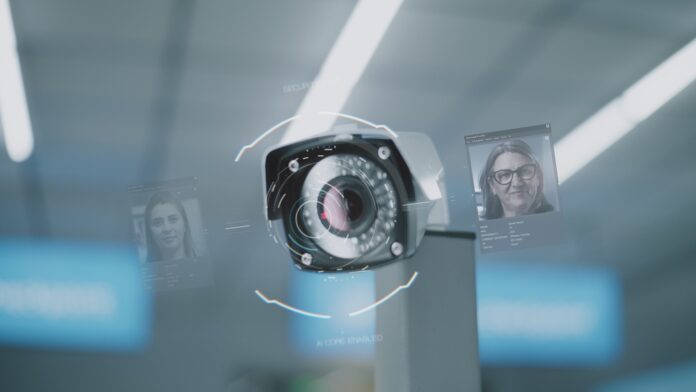Ao abrir o computador pela manhã, você não pensa em perímetros ou firewalls. Você pensa em acessar seus e-mails, sistemas internos, aplicativos financeiros e ferramentas colaborativas. Sem saber, é exatamente esse gesto cotidiano que se tornou o centro das maiores ameaças digitais atuais.
Hoje, a porta preferida dos invasores não é mais o servidor protegido, mas o usuário desavisado com sua identidade digital vulnerável. No Brasil e na América Latina, proteger acessos se tornou a nova fronteira da segurança cibernética – um desafio que, ao ser compreendido pelas empresas como prioridade estratégica, mudará completamente o rumo da luta contra os ataques digitais.
Credenciais de acesso comprometidas e phishing se tornaram um dos principais vetores de intrusão hoje. Estudo recentes indicam que pelo menos 74% dos incidentes de segurança envolvem algum erro humano ou engenharia social como vetor inicial, sendo o phishing o método mais frequente.
Ou seja, invasores costumam enganar funcionários para que revelem senhas ou cliquem em links maliciosos, abrindo caminho para a invasão. Além disso, a abundância de credenciais vazadas na internet potencializa esse problema: em 2024, a Bitsight registrou 2,9 bilhões de credenciais únicas comprometidas, um salto em relação aos 2,2 bilhões de 2023. Além disso, desde abril de 2024, mais de 19 bilhões de credenciais foram expostas globalmente.
Esses dados explicam por que as identidades digitais se tornaram o “ouro” dos hackers – ao obter acesso indevido a contas legítimas, eles podem contornar defesas tradicionais com facilidade.
Do perímetro ao Zero Trust: prevenção centrada em identidade
Diante desse problema, muitas empresas no Brasil e também na América Latina estão repensando suas estratégias de defesa para colocar a identidade no centro da segurança.
Modelos e controles antes considerados avançados agora são indispensáveis para prevenir ameaças de identidade antes que causem danos. Entre as principais abordagens preventivas, tais como a abordagem Zero Trust, que reduz significativamente a superfície de ataque, limitando movimentos laterais de invasores que obtêm credenciais.
Aliada a isso, a autenticação multifator (MFA) adiciona camadas adicionais de segurança no acesso às contas, praticamente eliminando ataques que dependem exclusivamente de senhas roubadas ou comprometidas por phishing – algo reforçado por estudos recentes, que mostram que quase todas as contas comprometidas não utilizavam MFA.
Paralelamente, políticas robustas de gestão de identidade, como o princípio do menor privilégio e monitoramento contínuo das permissões, reduzem drasticamente as brechas disponíveis para cibercriminosos. Combinadas a tecnologias avançadas como Identity Threat Detection and Response (ITDR) e User and Entity Behavior Analytics (UEBA), capazes de detectar comportamentos anormais em tempo real, essas práticas permitem antecipar ameaças e agir preventivamente, impedindo que pequenas falhas ou desvios iniciais evoluam para ataques sérios. Assim, as organizações podem agir proativamente contra ameaças modernas, fortalecendo de maneira consistente suas defesas digitais.
Riscos regionais e a urgência da prevenção proativa
Adotar essa postura preventiva focada em identidade não é apenas tendência, mas necessidade estratégica. Tanto o Brasil quanto a América Latina enfrentam desafios específicos: grupos de ransomware e espionagem têm o Brasil como alvo preferencial, combinando esforços de criminosos locais e internacionais em ataques complexos.
Muitos desses ataques exploram gaps de segurança de identidade – seja um servidor mal configurado, uma VPN protegida apenas por senha, ou usuários sem treinamento que caem em fraudes. Some-se a isso restrições orçamentárias e de pessoal especializado em segurança que afetam diversas empresas locais, e temos um cenário em que prevenir é muito mais eficiente do que remediar.
Uma violação séria pode custar milhões de reais em danos financeiros, interrupção de serviços e perda de confiança. Por outro lado, investir em prevenção traz ganhos de eficiência e segurança: reduz a ocorrência de incidentes (evitando paralisações), diminui o tempo gasto em respostas emergenciais e investigações, e protege a reputação organizacional.
No setor público e em PMEs, uma postura preventiva pode liberar recursos antes gastos “apagando incêndios” para serem aplicados em inovação e crescimento, ao mesmo tempo em que garante conformidade com leis como a LGPD e outras normas de proteção de dados.
A identidade no centro da estratégia
Em termos estratégicos, apostar na prevenção de ameaças de identidade é garantir a continuidade e a confiança nos negócios. Organizações que adotam autenticação forte, políticas de Zero Trust e vigilância contínua de contas criam um ambiente menos propício ao ataque e mais preparado para o futuro. Trata-se de antecipar o adversário, frustrando suas técnicas prediletas, e assim evitar prejuízos antes mesmo que ocorram.
No Brasil e na América Latina, onde a criatividade dos cibercriminosos não para de crescer, essa postura preventiva oferece não apenas mais segurança, mas também mais eficiência operacional – afinal, é muito mais eficaz construir defesas sólidas agora do que lidar com as consequências de um incidente depois.
Fazer da proteção de identidades digitais a pedra angular da estratégia de segurança não é apenas recomendável: é o que diferenciará as organizações resilientes e bem-sucedidas na era das ameaças cibernéticas avançadas.
por Felipe Guimarães, Chief Information Security Officer – CISO da Solo Iron


